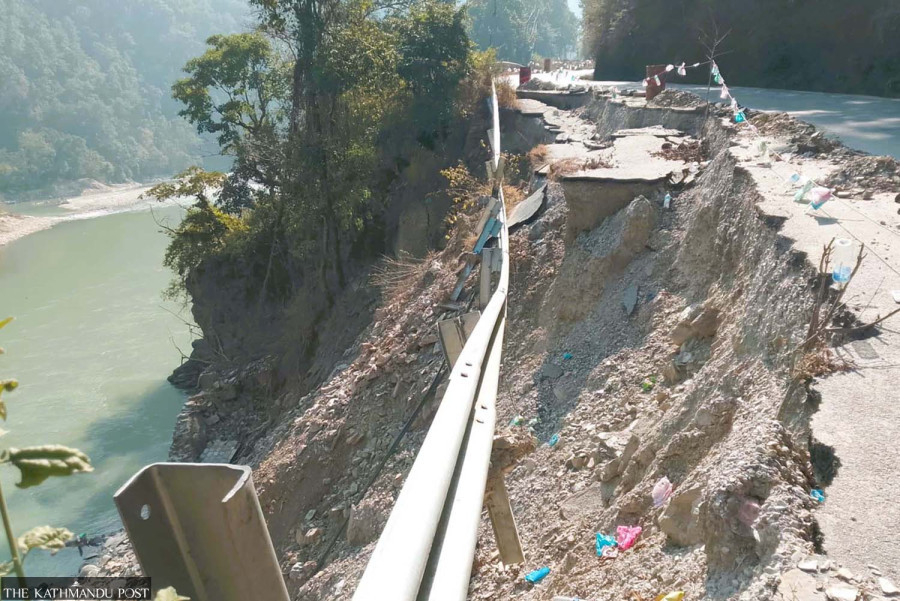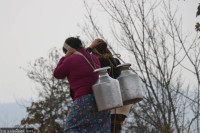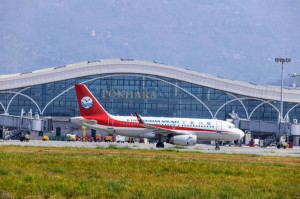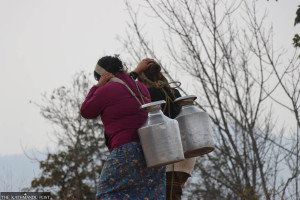Editorial
Mend it now
Urgent repair of Araniko Highway is vital considering its value for locals and national economy.
Roads and related infrastructure are lifelines of the Nepali economy. Not only do they open avenues for domestic trade but also serve as cogs for international commerce. One such vital route is the 115-km-long Araniko Highway, which begins in Kathmandu and ends in Kodari, connecting the country with Tibet Autonomous Region of the People’s Republic of China. Opened in 1967 following an earlier Nepal-China agreement in October 1961, this trade route has over the years immensely benefited both countries.
But the highway has been damaged over the years, most notably during the 2015 earthquakes. Even today, the quake-induced cracks and fragile topography cause landslides in many road sections. Concomitantly, flash floods that often strike the region have rendered the road unstable. Given these hurdles, the highway has long been a headache for the Nepali government. But a bigger concern is the apathy to renovating and maintaining the road, as a result of which trade has suffered, as has the public.
For instance, during the Covid-19 pandemic, as the roadway was impassable due to damages by floods and landslides in July 2021, an oxygen plant imported from China for Unified Covid-19 Hospital within Bir Hospital was delayed. The shipment had to be made through the Rasuwagadhi-Kerung border, a lengthy and difficult alternative route connecting Nepal and China.
The Bahrabise-Kathmandu segment of the highway in Sindhupalchok district is in a sorry state. In areas like Mahabhir, Kothe and Simle, around four kilometres of the road have caved in; the road in Kothe, in particular, has been impassable for years. In some places, the road is often too narrow for goods-loaded container trucks to pass, as per a recent Post report.
In response to the growing necessity of maintaining the highway and delays in the release of the fourth phase of the Chinese government’s economic and technical package, Nepal allocated Rs3.6 million to upgrade a 26-km section in July last year. But the authorities have yet to gear up for the repair job. (The Chinese government began funding the highway under the Araniko Highway Long-Term Maintenance Project in 2016, completing the third phase before halting further work. However, during Prime Minister KP Sharma Oli’s December 2024 visit to China, it expressed interest in advancing the fourth phase through an MoU on the Trans-Himalayan Multi-Dimensional Connectivity Network.)
As the highway is the shortest trade route to China and, as traders put it, a ‘convenient’ one, maintaining it will be a win-win for both countries. However, Nepal has the main responsibility for its upkeep as the highway for it is more than a trade link—it is directly connected to the safety and daily lives of the local residents who rely on it to take their goods to markets in Kathmandu and other major cities along the highway. The onus is on the Ministry of Physical Infrastructure and Transportation as well as the Department of Roads, to repair the road sections that have sustained severe damage—without further delay.
As vital is identifying the vulnerable areas of the roads with the assistance of geological experts and expediting slope stabilisation. All these efforts can be carried out in close coordination and with the help of the local level governments. Again, considering its importance for the country’s economy and for many of those living along it, there can be no justification to sit on repair works for much longer.




 10.12°C Kathmandu
10.12°C Kathmandu














